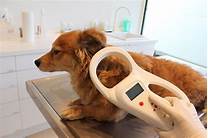How to Register a Pet Microchip
A microchip is a small device that is implanted under your pet's skin, usually between the shoulder blades. It contains a unique identification number that can be used to identify your pet if it is ever lost or stolen. Registering your pet's microchip is an important step in ensuring that your pet can be returned to you if it is ever lost.

How to Register Your Pet's Microchip
The process for registering your pet's microchip will vary depending on the manufacturer of the microchip. However, there are some general steps that you will need to follow:
- Purchase a microchip for your pet. You can purchase a microchip from your veterinarian or from an online retailer.
- Have your pet microchipped. Your veterinarian will implant the microchip under your pet's skin, usually between the shoulder blades.
- Activate your pet's microchip. Once your pet has been microchipped, you will need to activate the microchip by contacting the manufacturer. You will need to provide the manufacturer with your pet's name, breed, sex, age, and the microchip number.
- Register your pet's microchip with a national pet registry. There are several national pet registries that you can choose from. When you register your pet's microchip with a national pet registry, you will need to provide the registry with your pet's name, breed, sex, age, the microchip number, and your contact information.
Why You Should Register Your Pet's Microchip
There are several reasons why you should register your pet's microchip:
- If your pet is ever lost or stolen, registering your pet's microchip will make it easier for your pet to be returned to you. When a lost or stolen pet is found, the animal control officer or veterinarian will scan the pet for a microchip. If the pet has a microchip, the animal control officer or veterinarian will be able to contact the national pet registry to obtain your contact information.
- Registering your pet's microchip can help to protect your pet from being sold or adopted by someone else. If your pet is stolen and sold or adopted by someone else, the new owner may not know that your pet is microchipped. If the pet is ever scanned for a microchip, the new owner will be contacted instead of you.
- Registering your pet's microchip can help to protect your pet from being euthanized. If your pet runs away and is not found, it may be taken to an animal shelter. If the pet is not claimed within a certain period of time, it may be euthanized. Registering your pet's microchip will help to ensure that you are contacted if your pet is taken to an animal shelter.
Conclusion
Registering your pet's microchip is an important step in protecting your pet. If your pet is ever lost or stolen, registering your pet's microchip will make it easier for your pet to be returned to you.
Declaration: All article resources on this website, unless otherwise specified or labeled, are collected from online resources. If the content on this website infringes on the legitimate rights and interests of the original author, you can contact this website to delete it.



